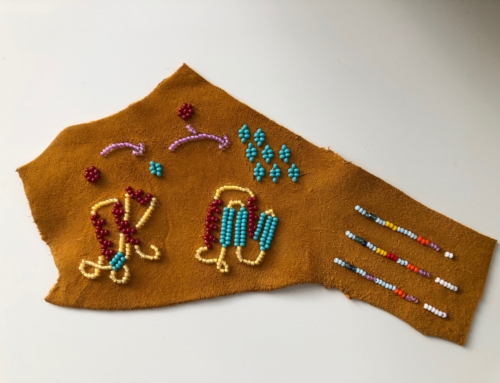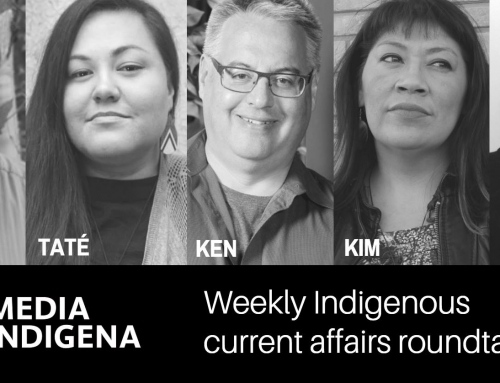On October 9, 2010, I posted a blog entry (re-posted below) in which I respond with a mixed review to the Genographic/Seaconke Wampanoag jointly-authored publication “Genetic Heritage and Native Identity of the Seaconke Wampanoag” (Zhadanov et al 2010). In short, my thoughts were that Genographic’s genetic data could undercut tribal identity and attendant political claims. The Seaconke Wampanoag who were sampled were shown to have almost no “Native American” genetic lineages. It remains to be seen what the Bureau of Indian Affairs (BIA) would do with such data. It could be damaging to a tribe looking for recognition from the U.S. government and its attendant rights and resources. However, I characterized the jointly-authored article as also a step forward for Genographic in that it simultaneously foreground non-genetic tribal histories. Scientific publications usually give short shrift to non-genetic knowledges. I have been very critical of Genographic elsewhere. In the interest of analytical fairness, I wanted to also acknowledge what the project did right. But this month, things have taken a turn for the worse in Genographic’srelations with some of its indigenous subjects. My October 2010 post has been extensively referenced by the Peruvian organization Asociación ANDES in their comprehensive critique of the Genographic Project’s now thwarted plans to sample Q’ero people, descendants of Incas, who live in a rural area of the Cusco Region of Peru.
Asociación ANDES raises important points in their communiqué that I’d like to highlight and cross-reference with the productive response of another body to the kind of “old school” research that Genographic is accused of. That is, research practices that are top-down, primarily extractive in that they benefit researchers, their institutions and economic networks while returning little or no intellectual or economic benefit to usually much less powerful research subjects. In addition, such research and how it conceptualizes history and personhood may directly assault indigenous conceptions of history and personhood that condition indigenous claims to self-governance and rights to land and resources. After all, is it not genetic and other biophysical data, non-indigenous historical narratives, and the moral frameworks of a scientific state that hold sway in dominant courts and institutions? Certainly, indigenous historical narratives, moral frameworks, and data (sometimes biophysical but also sometimes immaterial and not knowable by science) do not hold much sway.
Asociación ANDES accuses Genographic scientists of “neo-colonial” research. It’s difficult to argue with the organization given the uneven benefits that accrue to those who research versus those who extend their arms to have their veins opened, or who part their lips to have the cotton swab inserted. The biological resources of such individuals are extracted so cleanly and quickly that it is sometimes difficult to see the political economic similarities between these procedures and the much messier extraction through the centuries of indigenous natural resources via minerals mining and land theft and development.
For those in doubt, let me substantiate the comparison between old and neo-colonialisms a bit more fully. As I summarize Asociación ANDES incisive points and relate them to another important document that I called attention to in yet another post, the Canadian Institutes for Health Research (CIHR) Guidelines for Health Research Involving Aboriginal People. CIHR is the Canadian equivalent to our National Institutes of Health (NIH). Let me emphasize that the research problems highlighted by Asociación ANDES are the types of practices that are viewed as problematic and addressed by the CIHR guidelines. The guidelines help remedy the unsurprisingly colonial context of human subjects research that has always been entangled with and not separate from the colonial practices of nation states. A comparison with the CIHR guidelines shows that Asociación ANDES’ critiques are not radical, but their ideas are increasingly recognized as fundamental to ethical research today. “Ethical” in a post-colonial era means also culturally competent, politically respectful, and mutually beneficial, as the CIHR guidelines attest to. Roderick R. McInnes, immediate past president of the American Society of Human Genetics (ASHG), in his presidential speech at the 2010 ASHG annual meeting, highlighted multiple principles that are consistent with Asociación ANDES call for ethical research.
Following, I paraphrase Asociación ANDES’ critiques of Genographic. In bold, I paraphrase CIHR guidelines that address such problems:
- BAD INFORMED CONSENT PROCESS. Genographic did not approach local/regional authorities to get approval for their research plan, nor did they consult research subjects before plans were announced to the community that DNA would be collected. Genographic’s Web site asserts that informed consent should be “deliberate, considered, individual and collective.” To the contrary, a one-page flyer with patronizing language was delivered to the community not long prior to the planned DNA collection. A powerpoint presentation was planned immediately prior to DNA collection. This allows no time for community input to the research process, nor for real collective consent as collective discussions take considerably more time than individual discussion and consent, which is also not easy given the difficult subject matter. CIHR Article 4: Researchers should consult community leaders first to obtain their consent before approaching community members individually. CIHR Article 11.1: A researcher has an obligation to learn about, and apply, Aboriginal cultural protocols relevant to the Aboriginal community involved in the research.
- UNCLEAR ON FUTURE RESEARCH AND USES OF SAMPLES/DATA. Genographic has not clearly identified future planned genetic studies and therefore future uses of blood samples and sequence data. In addition, future disposition of collected samples is unclear. It is important to be clear on these matters because it has been a common practice for genetic researchers to trade samples between labs with no reconsent of samples for different research projects–projects to which the original donors might object. CIHR Article 12: Researchers should respect the proprietary interests of individuals and communities in data and samples, obtain consent for transfer of data and samples to third parties and for secondary uses if samples or data can be traced back to individuals or communities. CIHR Article 13: Biological samples should be considered “on loan” to the researcher unless otherwise specified in a research agreement. This article is influenced by Doris Cook’s and Laura Arbour’s “DNA on Loan” concept.
- DISRESPECT OF GOVERNMENT JURISDICTION. Genographic has disregarded Cusco’s regional government sovereignty by not contacting the government prior to planning collection. Genographic should have made its intentions known to “state, regional, and indigenous” governing bodies to acquire approval. CIHR Article 2: Community jurisdiction over the conduct of research should be understood and respected. (Asociación ANDES is unclear about the relations between state, regional, and indigenous governing authorities in its communiqué. It seems important to know whether indigenous self-determination is supported by regional and state authorities.)
- POTENTIAL STIGMATIZATION. Genetic sequences linked to indigenous communities today may in the future be linked to particular medical conditions that can stigmatize indigenous populations as peoples. Thus privacy and anonymity as a collectivity is key for indigenous peoples. Individual anonymity and privacy–the stuff of standard informed consent models–is inadequate for indigenous groups. Asociación ANDES charges a Genographic scientist from Peru with writing about a particular indigenous group having a “defective gene” that “predisposes them to infectious diseases such as tuberculosis and HIV…” CIHR Article 5: Concerns of individual participants and community regarding anonymity, privacy, and confidentiality should be respected and addressed in a research agreement.
- DISREGARD OF INDIGENOUS KNOWLEDGE, SCIENTIFIC CHAUVINISM. Genographic purports to tell the genetic “truth” about Q’eros’ indigenous identity, whether they are in fact related to the Incas or the Aymara or to Amazonian peoples. The Q’eros already know who they are, and their ancestors in non-genetic ways. CIHR Article 1: Researchers should understand and respect Aboriginal world views, including responsibilities to the people and culture that flow from being granted access to traditional or sacred knowledge. Article 7: Aboriginal people retain their inherent rights to any cultural knowledge… The researcher should also support mechanisms for the protection of such knowledge…
- BAD SCIENCE. “Historical claims by molecular biologists sometimes overreach their field of competence and what can ultimately be concluded through science and the historical record. They are influenced by and reliant on assumptions about genetically ‘isolated’ or ‘inbred’ populations that discount historical fluidity of cultures and previous intermarriage.” This shortcoming in researcher knowledge can be in part remedied by CIHR Article 3: Communities should be given the option of a participatory research approach. Also by CIHR Article 14:The Aboriginal community should have opportunities to participate in data interpretation and to review conclusions to ensure accuracy and cultural sensitivity of interpretation.
- SCIENTISTS, STATES, AND INDUSTRY, BUT NOT INDIGENES BENEFIT FROM RESEARCH. Asociación ANDES charges the project with existing only “to satisfy the curiosity of Western scientists” who stand to benefit by gaining publications and scientific prestige, while the Q’eros get “molecular ‘proof’ or ‘disproof’ of their heritage” with profound legal and social consequences. If genetic data is used to argue against indigenous heritage, a peoples’ claims to self-governance, land, and resources are compromised. Genographic has not secured the indigenous involvement needed to articulate a research scope in which indigenes might actually benefit. Indeed, economic benefits stand to accrue only to non-indigenous scientists as they build their careers. Critics fear that nation-states and commercial actors may also benefit from the extraction of indigenous genetic data that seeds the biotechnology industry just like the extraction of indigenous natural resources has long benefited non-indigenes. In addition to CIHR Article 1 that calls for researcher respect for Aboriginal world views, CIHR Article 9 enlightens: Research should be of benefit to the community as well as to the researcher.
- FULL DISCLOSURE OF COMMERCIAL INTERESTS & PROTECTION OF INDIGENOUS INTELLECTUAL PROPERTY. While Genographic prohibits commercialization of genetic samples and data by members of its consortium, Genographic scientists should fully disclose their support for and ties to industry in their other research projects, including to the biotech industry. Published “sequence and diversity data” may be commercially exploited by other, non-Genographic scientists. This kind of openness would engender real informed consent, disclosing fully who benefits and how. CIHR Article 8: Concerns over and claims to intellectual property should be explicitly acknowledged and addressed prior to research and expectations of all parties stated in research agreement. CIHR Article 12.1: Researchers should respect the rights and proprietary interests of individuals and communities in data and biological samples generated in the course of research, and such interests should be stated in research agreements unless communities waive the right. Again, Article 13 regarding the DNA being “on loan” to the researcher is instructive.
- COMMUNITY CAPACITY BUILDING NECESSARY? Real informed consent may be impossible without specialized training in genetics, without which it is difficult to evaluate scientists’ claims. CIHR Article 10: Researchers should support education and training of Aboriginal people in the community, including training in research methods and ethics. This is followed by CIHR Article 14: Aboriginal community should have opportunities to participate in data interpretation and to review conclusions to ensure accuracy and cultural sensitivity of interpretation.
Original 5/12/2011 Disclaimer: I rely on Asociación ANDES describing accurately Genographic’s public relations materials and their actions on the ground, or lack of action. The problems the organization points out are consistent with my critiques and those of others, both scholars and activists, of Genographic and of genetic research on indigenous peoples historically.
10/17/11 Update: Since I originally wrote this blog entry, a colleague, an anthropologist of science who works in Latin America has translated for me the original letters between the Peruvian indigenous community leadership, the Cusco regional President, and National Geographic. These letters in Spanish are linked to in the May 6, 2011 ScienceInsiderarticle that covered this story. The English translations, which are consistent with ANDES’ analysis of the situation, will soon be available at the Web site Genomics, Governance, and Indigenous Peoples.



